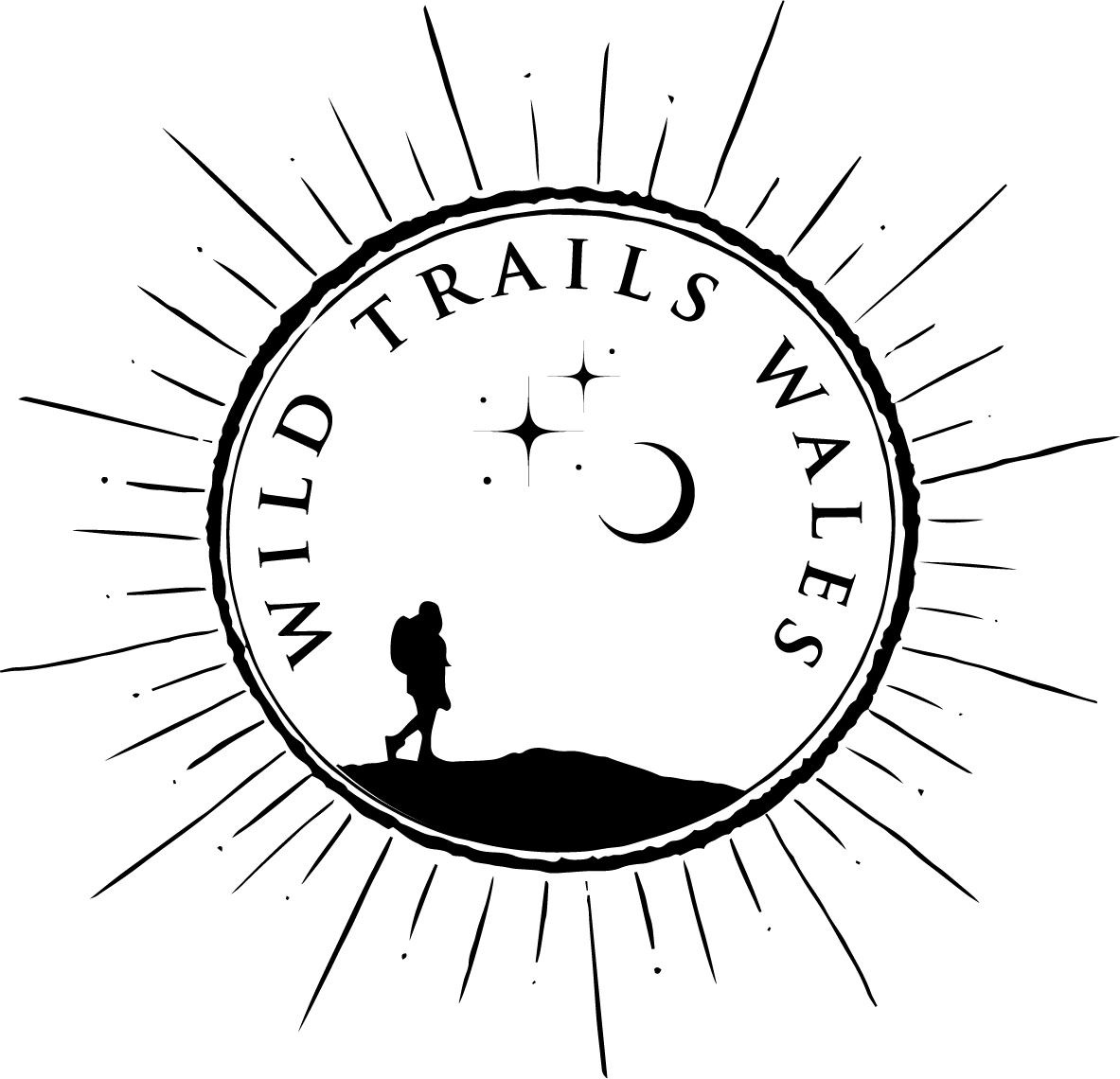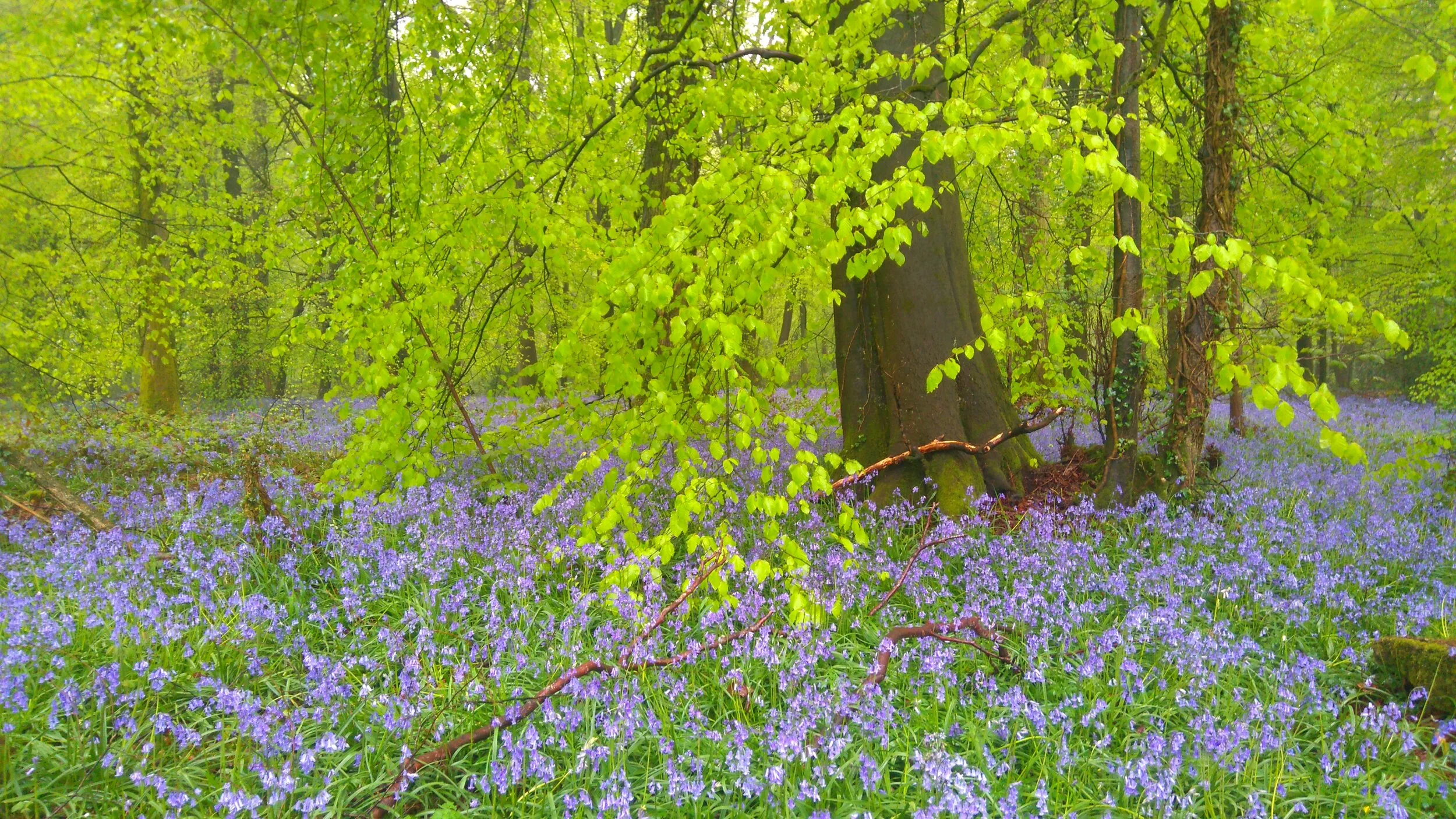Wild Trails Wales Guide: Spotting Spring Wild Flowers in Wales
Bluebells in the Wye Valley
After a long, dark winter there is nothing more uplifting than seeing the more visible signs of the spring season arrive, with the promise of abundance that they bring. Spotting spring flowers, whether the first tentative, subtle, yet brave late winter / early spring arrivals; or the masses of heavily scented flowers that arrives as the season gathers pace and progresses; is a wonderful way to connect with the seasons, with nature’s - our own - rhythm and measure of time passing. Wales is outstanding for flamboyant displays - from woodland floors to hedgerows, and coast path to meadows. Here are some are the most-loved of our wild spring flowers, along with some that you may not be familiar with.
Snowdrops, or ‘Eirlys’ in Welsh are delicate yet determined flowers that begin flowering in January and flower throughout February. The delicate white umbrella-shaped flower appears often at the base of trees, in hedgerows, on the woodland floor and in many graveyards. Although certainly naturalised and found growing wild here in Wales, it isn’t clear if the Snowdrop is a native species or whether it escaped from churchyards and gardens where it was grown linked with religious beliefs in the 18th Century.
Male Hazel Catkin Flower
Female Hazel Catkin Flower
Several trees have catkin flowers, but the Hazel, with it’s yellow ornamental flowers dangling in the breeze are one of the first flowers in the woods and provide some welcome colour amongst the bare branches of late winter and early spring. Look closely for the blink-and-you-miss-them tiny purple female flowers. You can spot these flowers across Wales, in deciduous woodland, hedgerows, wetlands and grasslands. If pollinated, the flowers can bear hazelnuts later in the year.
Daffodil
As the national flower, the Daffodil is one of the most-loved flowers in Wales and one that very few will struggle to identify, though the vast majority of Daffodils you will come across on roadsides, and in parks and gardens are the cultivated varities; true wild daffodils are much rarer. They are smaller than their popular relatives, and grow in woodlands, bunched together. Their pale petals surround a slightly darker trumpet. Flowering depends on their microclimate and weather patterns, but you can be on the lookout from late February to early April.
Celandines, not to be confused with buttercups which appear later on in the year more often in grass, verges and meadows, is a bright yellow glossy flower which grows low, often in woodland areas. The leaves begin to appear in winter, with the flowers appearing sometimes as early as January depending on the climate, and soon arrive numerous from February until about April.
Primrose
Wild Primrose are pale yellow in colour and though typically a woodland plant, they can be found more widely. Wild primroses are an ancient woodland indicator species. They can appear as early as January in sheltered areas but are at their best in late February through March.
Wood Anenomes
The name offers a clue as to where you are most likely to see Wood Anenomes! Beautiful delicate white flowers can be found carpeting the ground of ancient deciduous woodland across Wales. The white petals surround yellow anthers and seem to stretch up towards the light. The best time to see them is between March and May.
Violets
Dog Violets are small, delicate, purple flowers which grow in woodlands, hedgerows, grassland and verges. The best time to see them is around May, and they can grow alone or in clusters. Look out for them in the hedgerows when walking the Wales Coast Path or in woodland areas.
This has to be the spring flower that people get most excited about! Ramsons, or Wild Garlic, are beautiful white strongly scented flowers which can be found in woodlands from April to May. Their scent is unmistakable and they’re hugely popular with foragers as an ingredient. Look out for them carpeting the woodlands of the Wye Valley and Gower Peninsula amongst many other places.
Another woodland and hedgerow flower, the tall Yellow Archangel is an elegant plant with hooded orchid-like yellow flowers set on a thick stem. They begin to appear in April and flower through to June, and in places can form a large carpet.
Bluebells
Bluebells have to be one of the most evocative flowers in Wales and their thick scent filling the woodland floor on a warm spring day is one of the best gifts of nature! Native bluebells can be distinguished from non-native varities by looking at their stems which seem to droop under the weight of the flowers. The petals curl upwards slightly. The best time to see them are April and May, and they are another ancient woodland indicator species. Look for them in deciduous woodland and on mountainsides in the Brecon Beacons and Snowdonia National Park. They also grow abundantly on the coast path particularly Pembrokeshire and Ceredigion.
This is a very subjective and small selection of the large number of amazing wild flowers that can be found during Spring in Wales. I should point out that I’m an enthusiast, not a botanist and still very much learning and studying these flowers, so please be sure you correctly ID any flowers before you do anything with them, and really, flowers are much better left where they are to provide an important habitat for all our pollinators and birds. In many cases wild flowers are protected by law and musn’t be picked, so it’s always a good idea to take only photographs.












